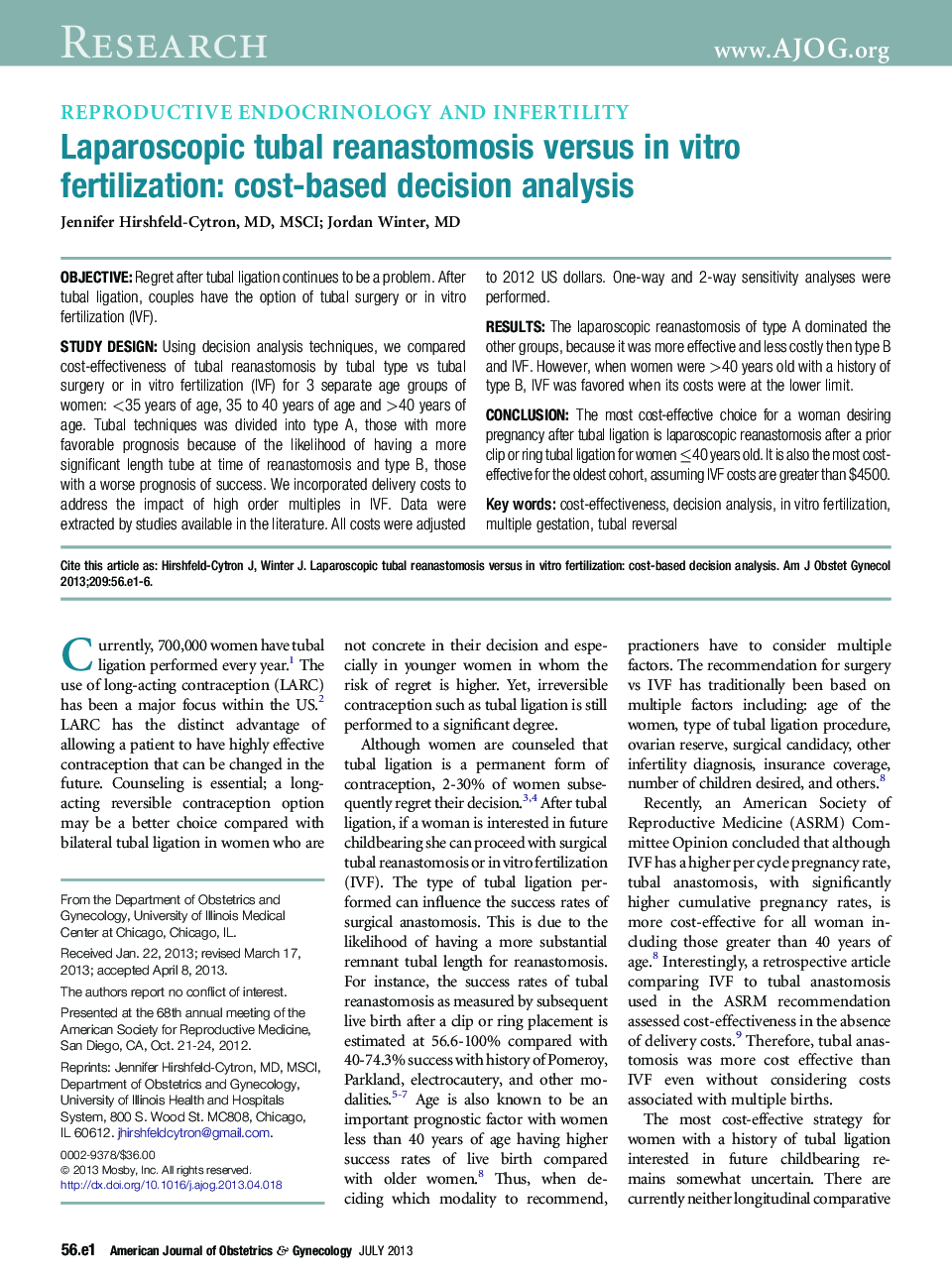| Article ID | Journal | Published Year | Pages | File Type |
|---|---|---|---|---|
| 6145871 | American Journal of Obstetrics and Gynecology | 2013 | 6 Pages |
ObjectiveRegret after tubal ligation continues to be a problem. After tubal ligation, couples have the option of tubal surgery or in vitro fertilization (IVF).Study DesignUsing decision analysis techniques, we compared cost-effectiveness of tubal reanastomosis by tubal type vs tubal surgery or in vitro fertilization (IVF) for 3 separate age groups of women: <35 years of age, 35 to 40 years of age and >40 years of age. Tubal techniques was divided into type A, those with more favorable prognosis because of the likelihood of having a more significant length tube at time of reanastomosis and type B, those with a worse prognosis of success. We incorporated delivery costs to address the impact of high order multiples in IVF. Data were extracted by studies available in the literature. All costs were adjusted to 2012 US dollars. One-way and 2-way sensitivity analyses were performed.ResultsThe laparoscopic reanastomosis of type A dominated the other groups, because it was more effective and less costly then type B and IVF. However, when women were >40 years old with a history of type B, IVF was favored when its costs were at the lower limit.ConclusionThe most cost-effective choice for a woman desiring pregnancy after tubal ligation is laparoscopic reanastomosis after a prior clip or ring tubal ligation for women â¤40 years old. It is also the most cost-effective for the oldest cohort, assuming IVF costs are greater than $4500.
